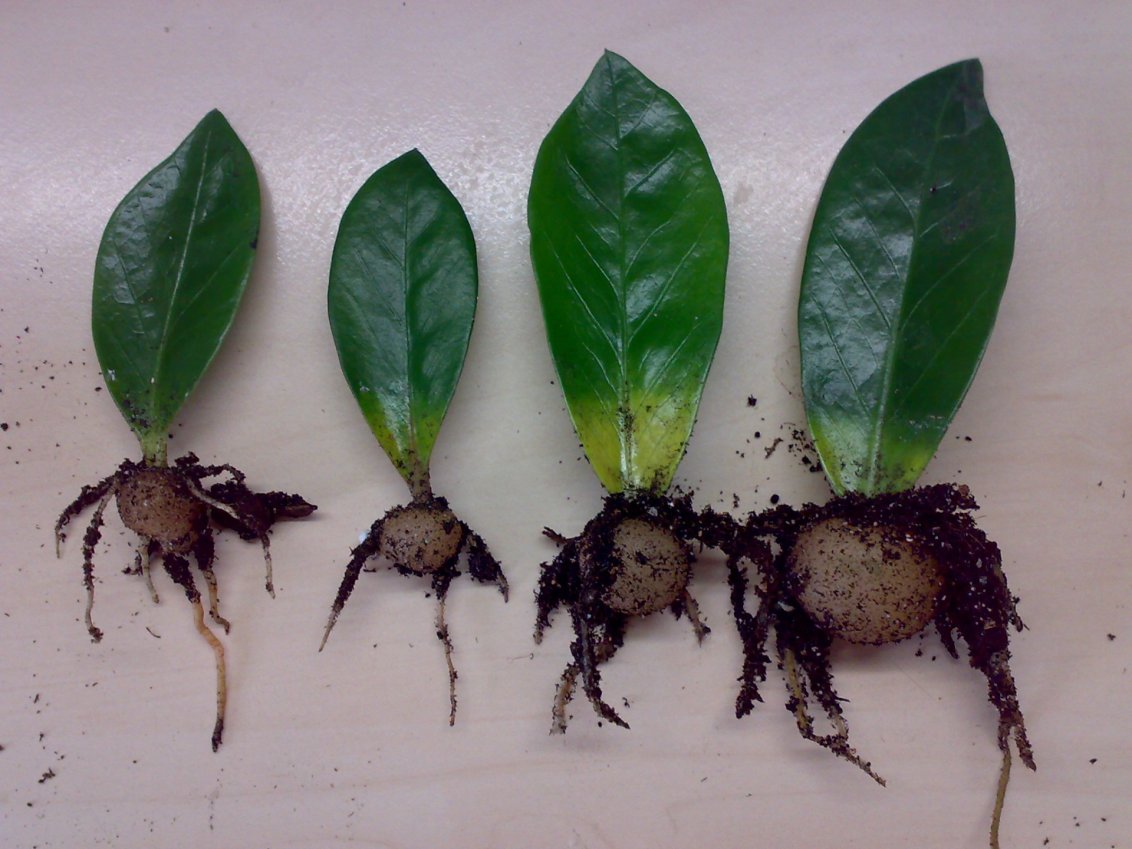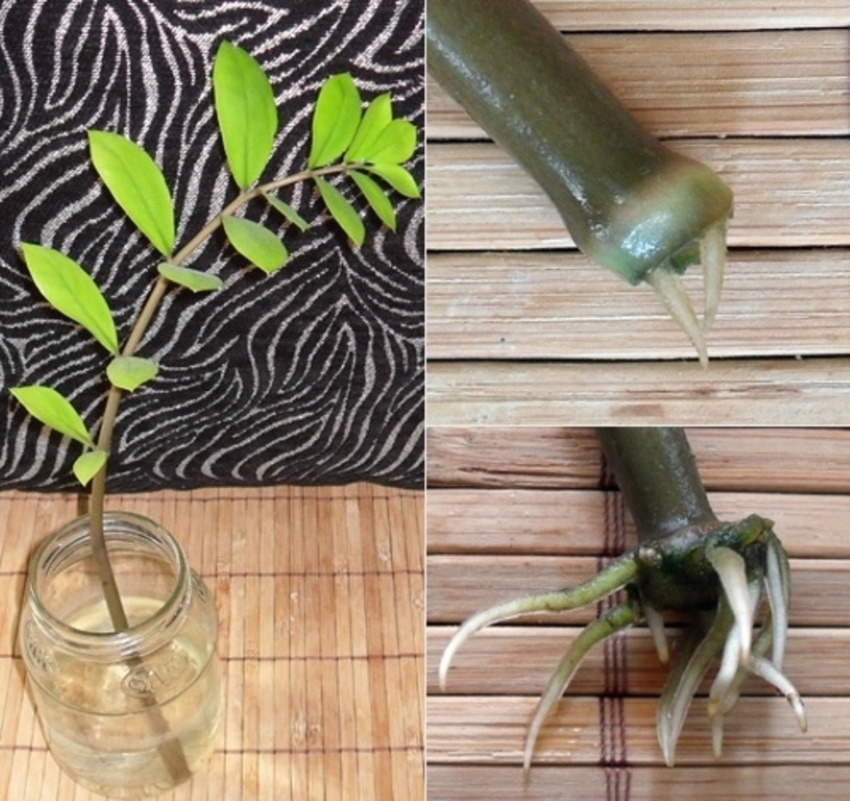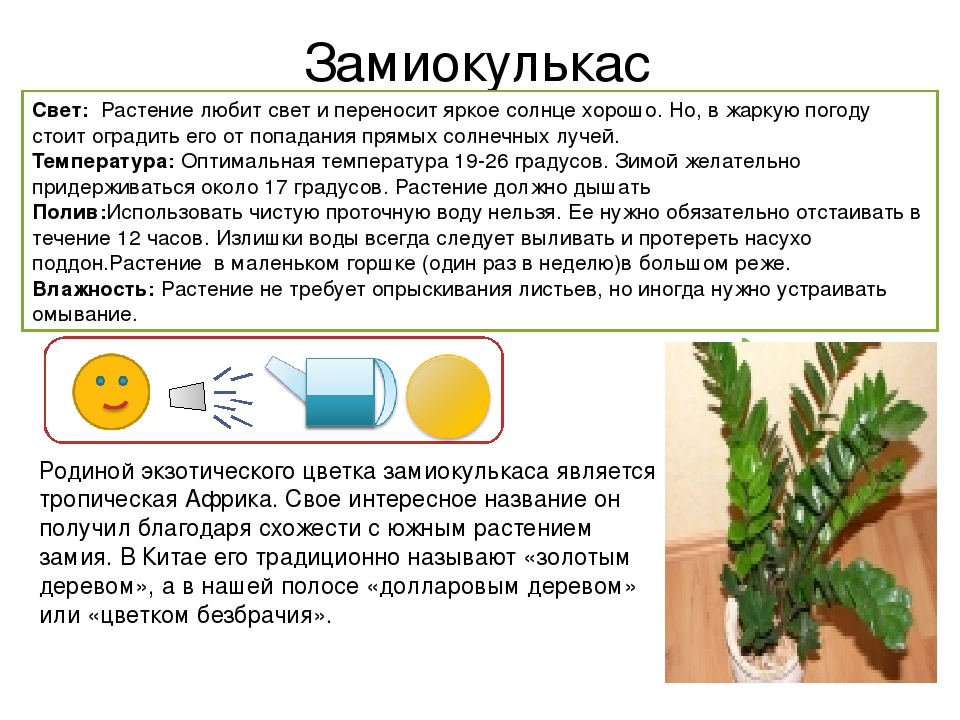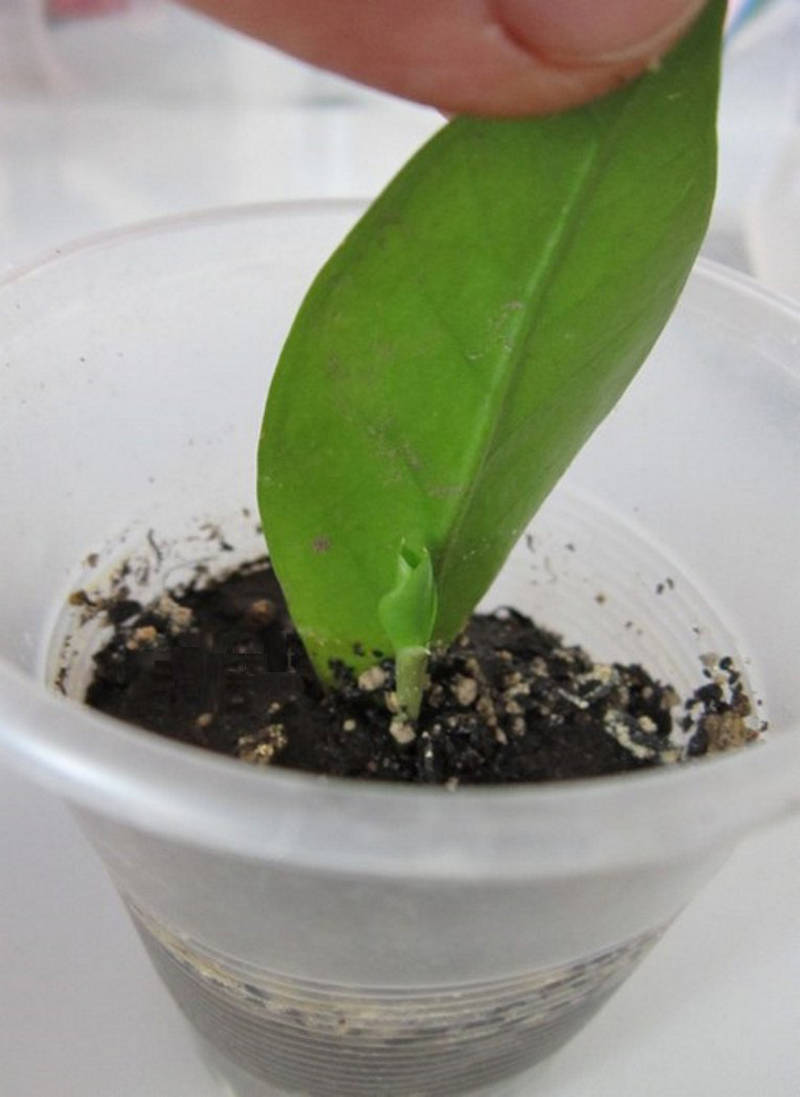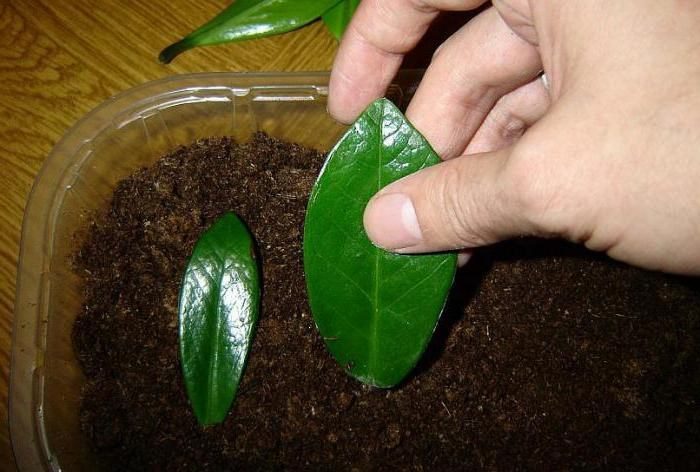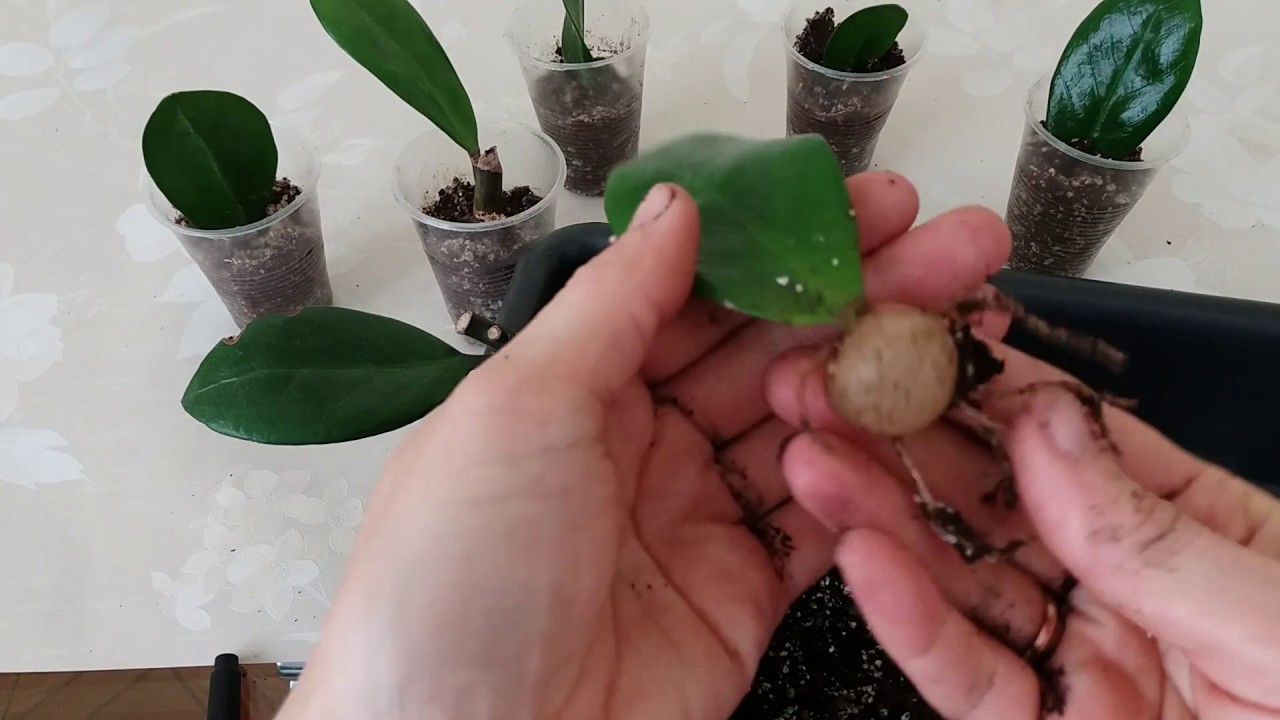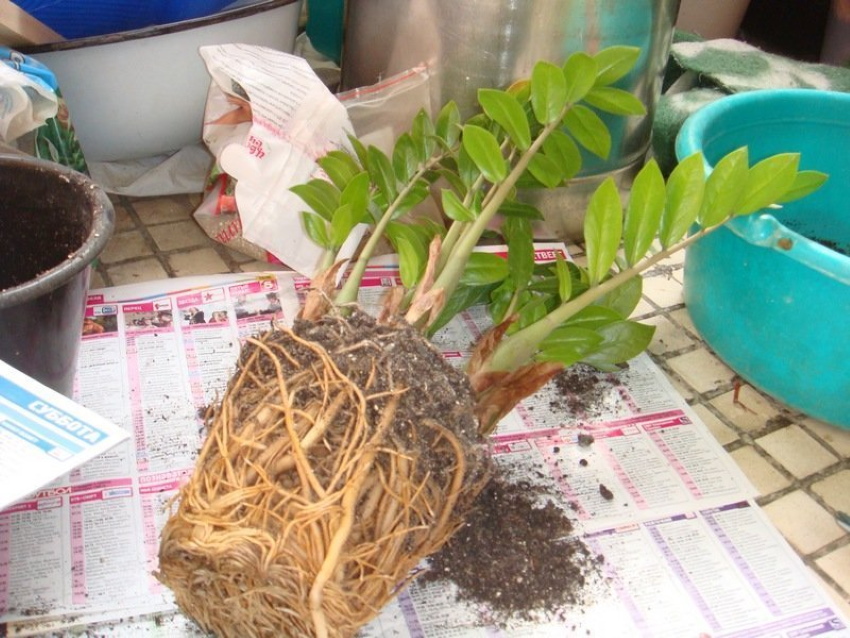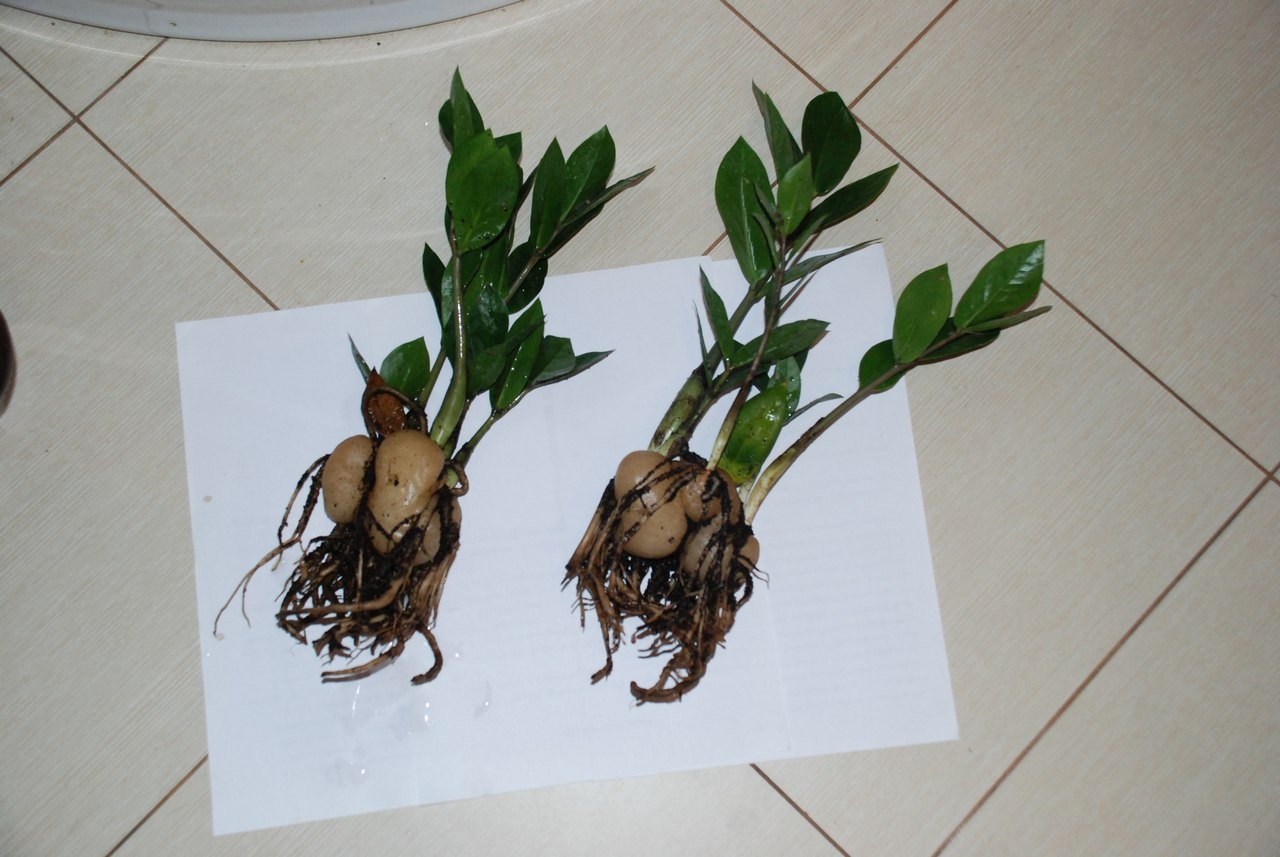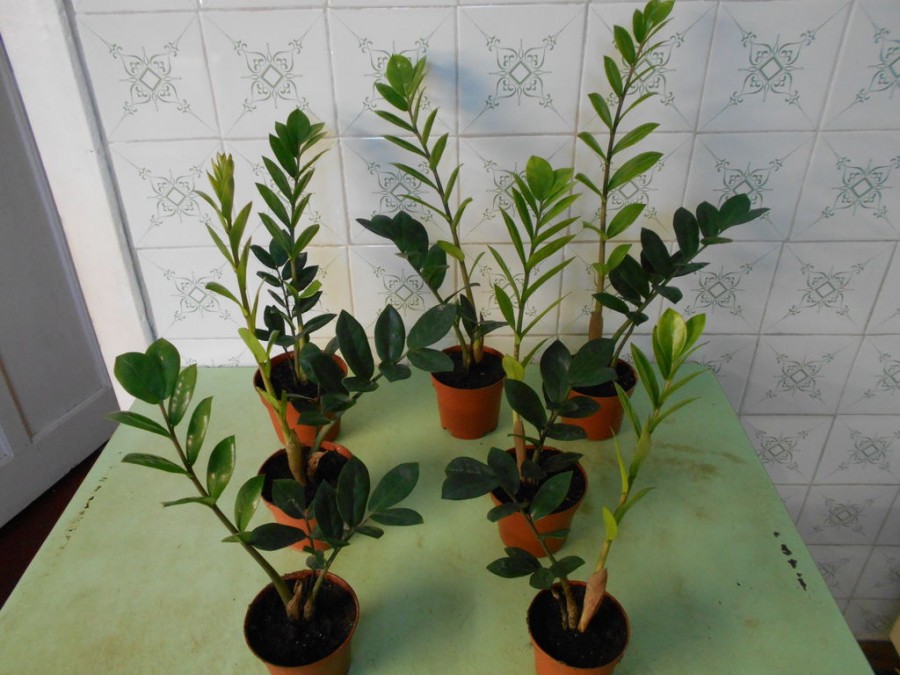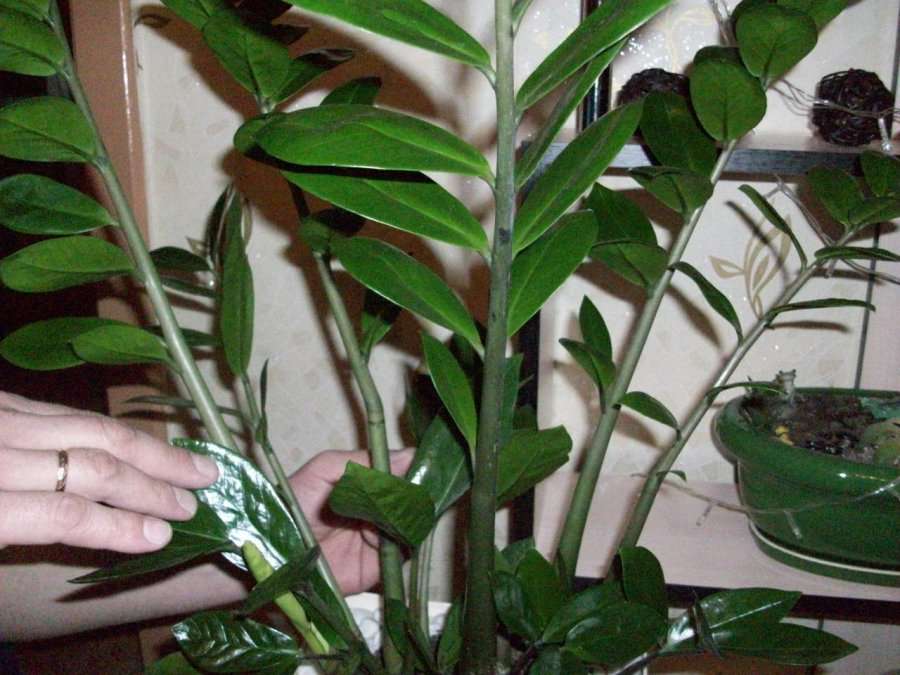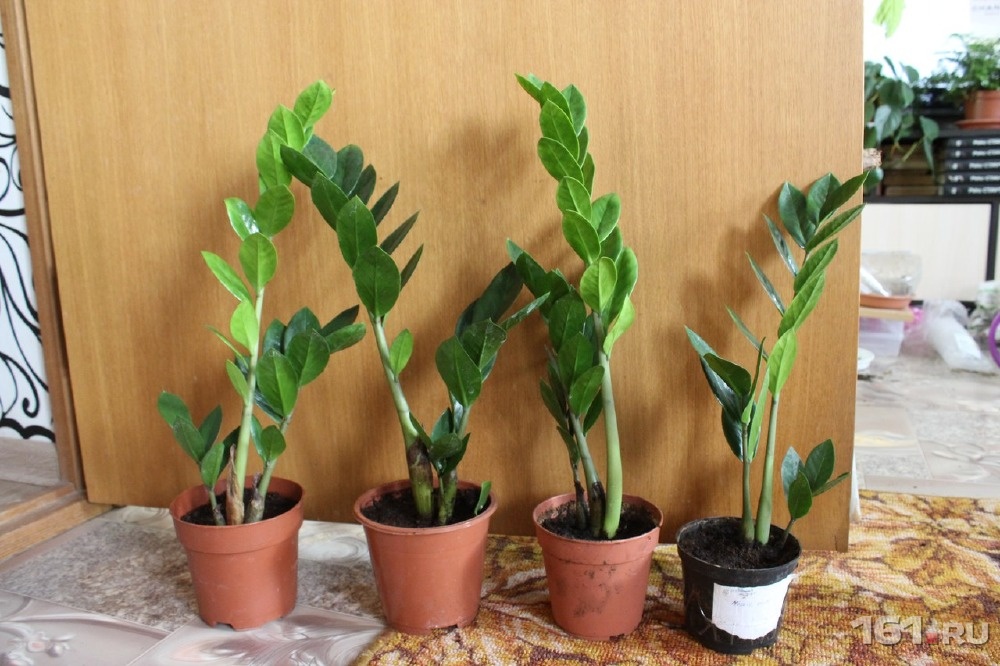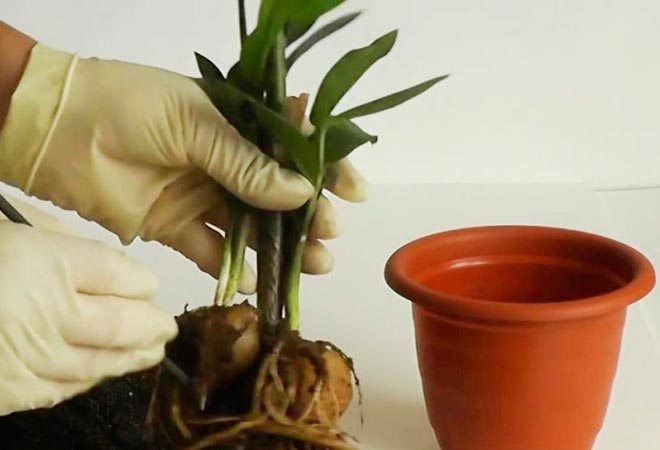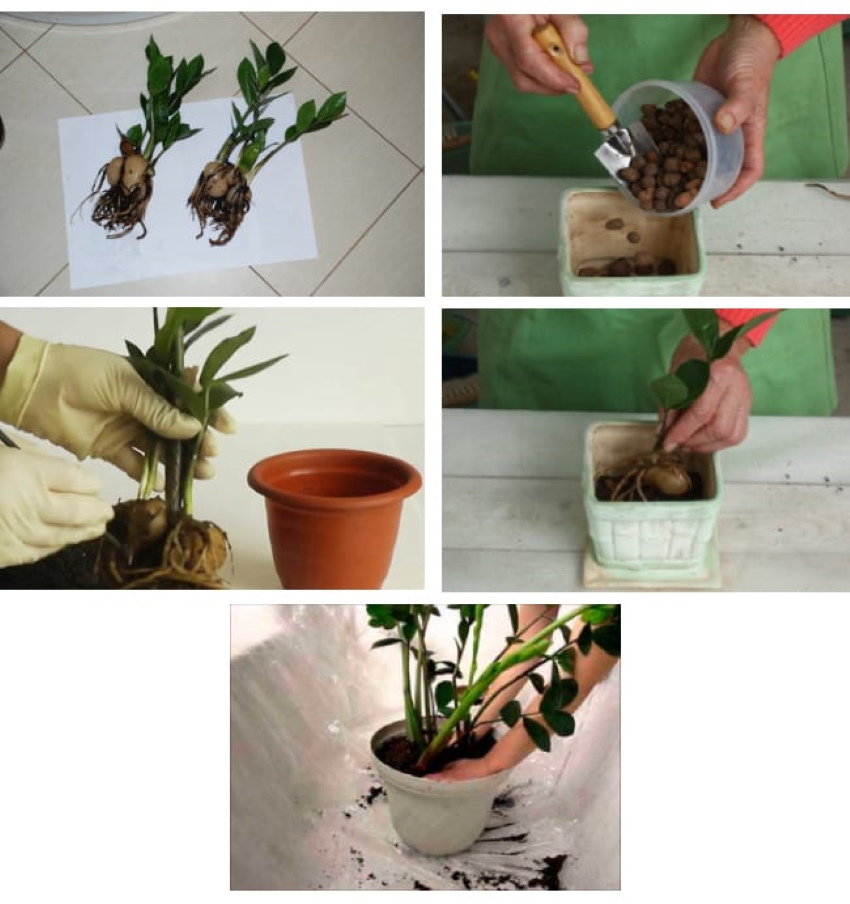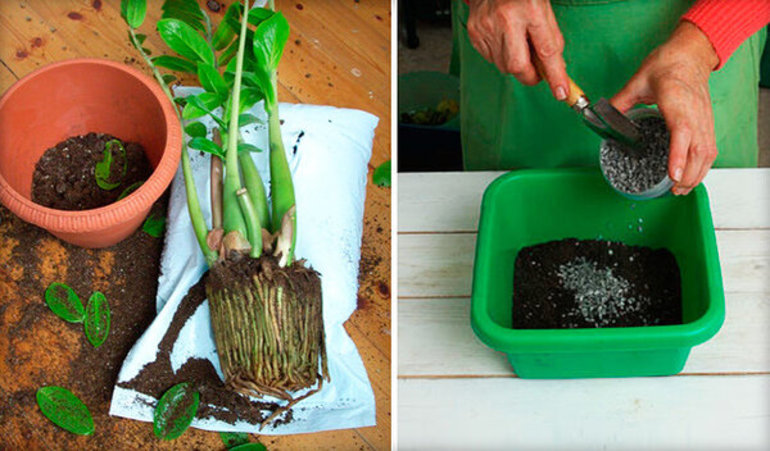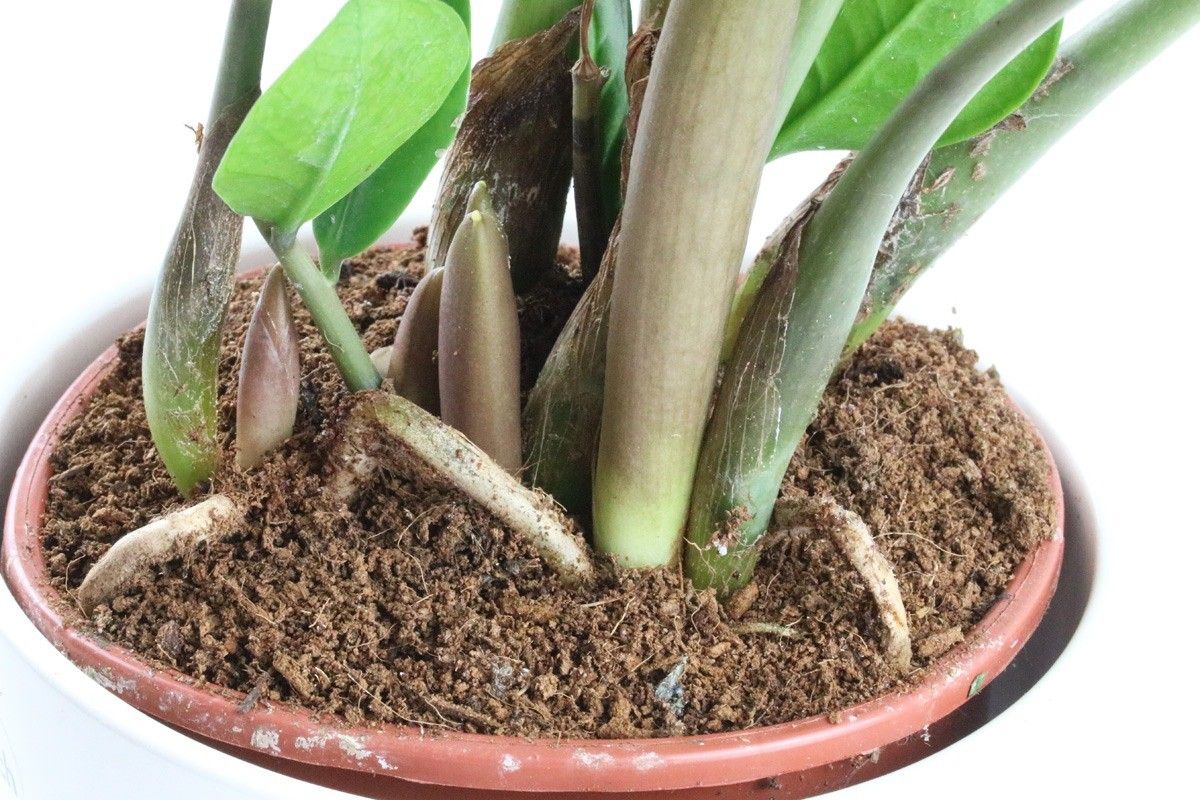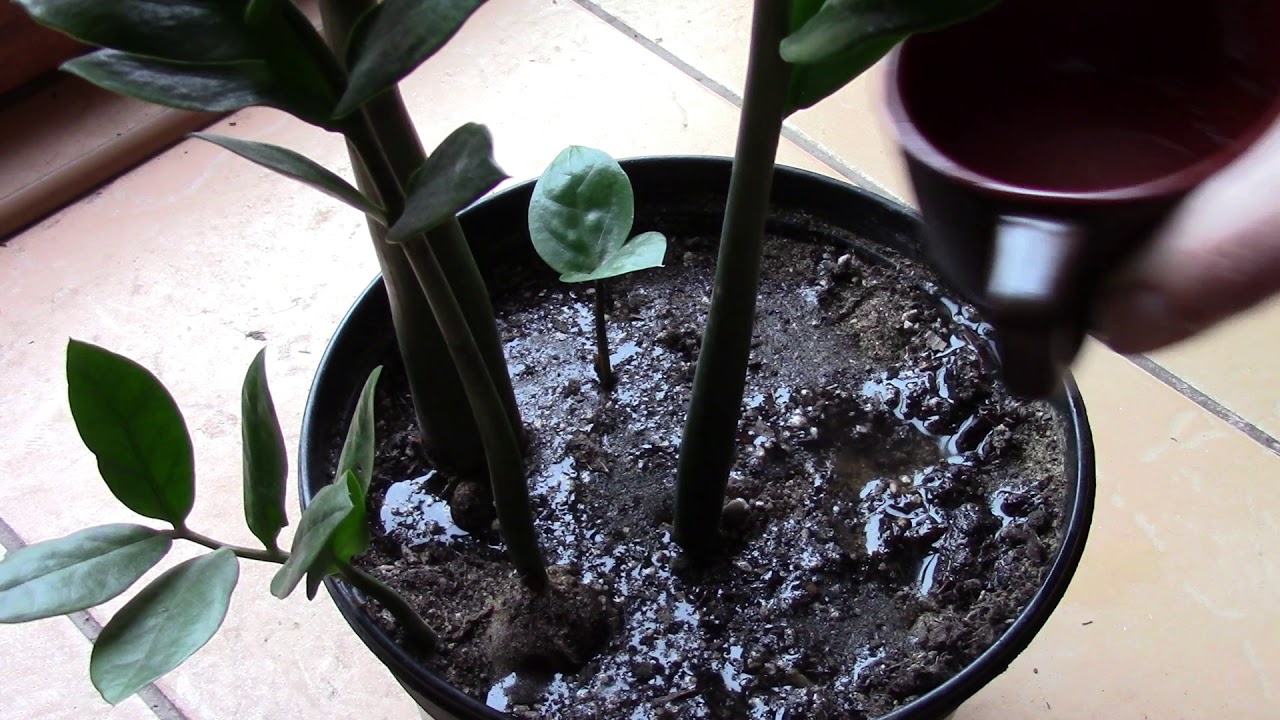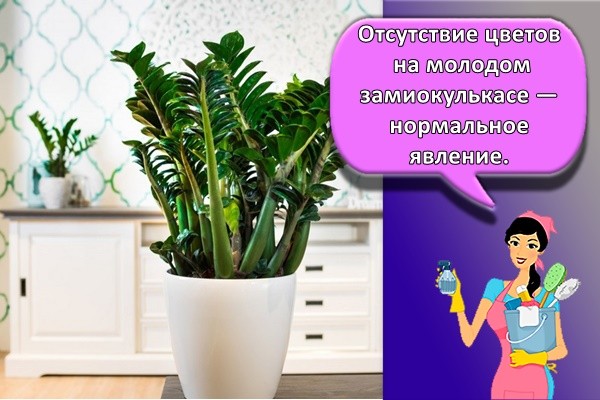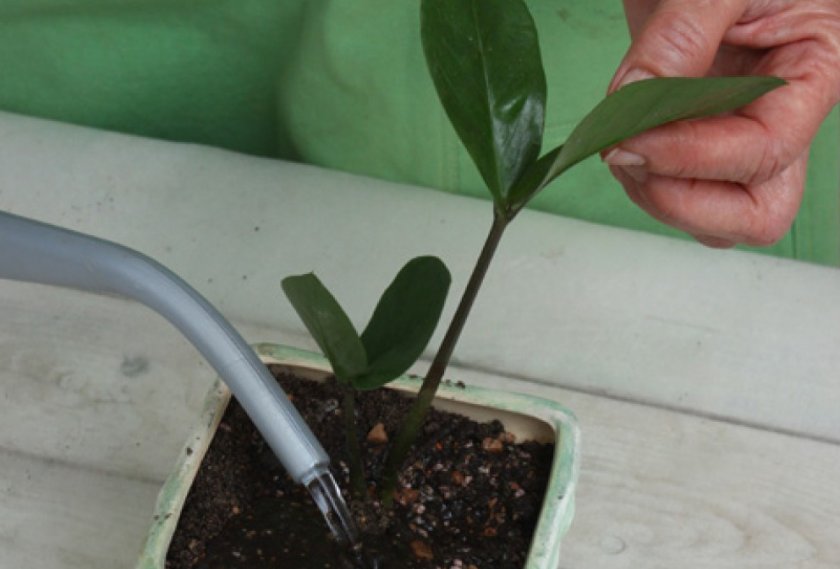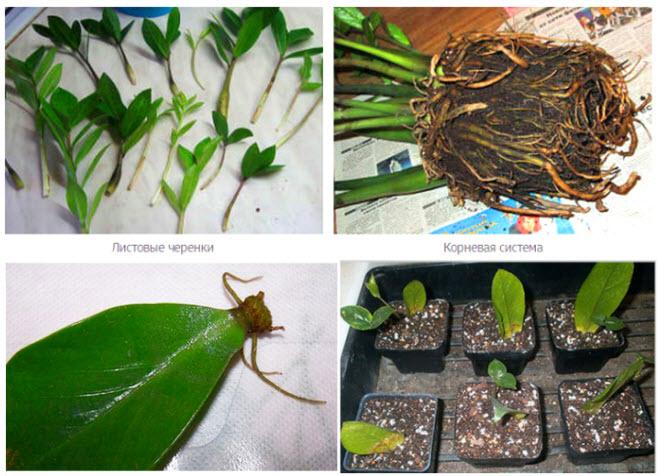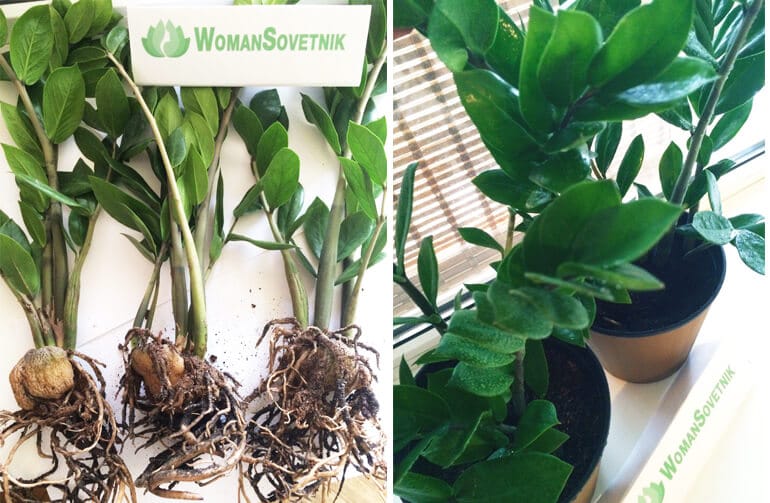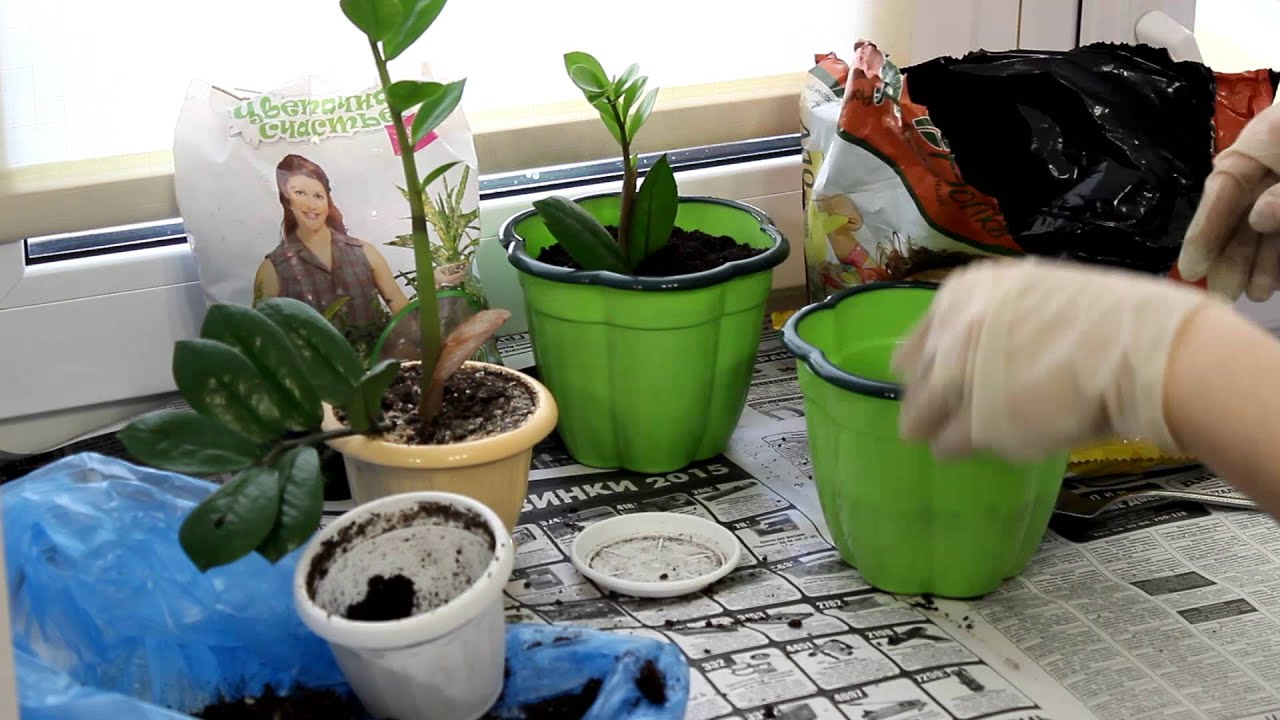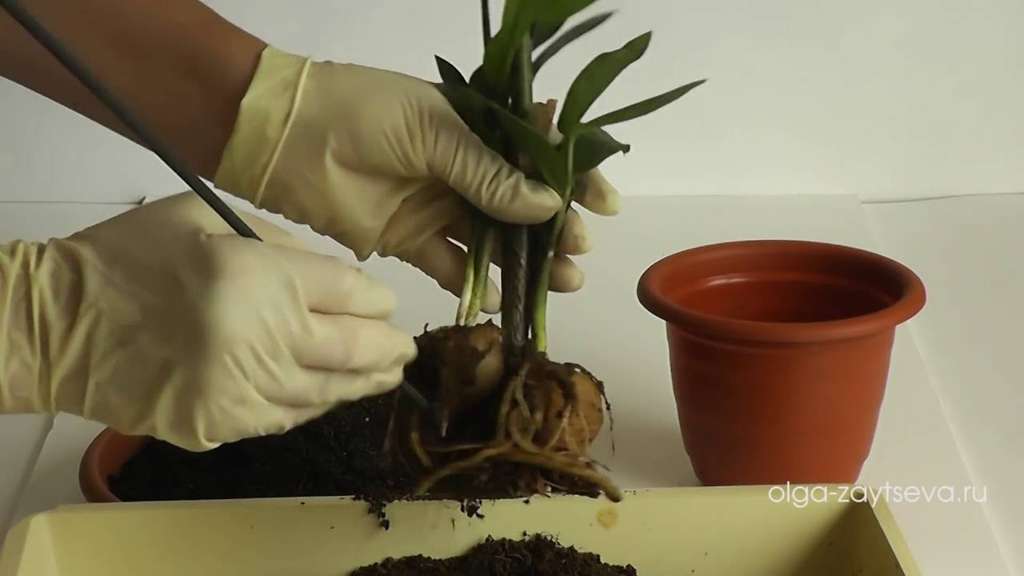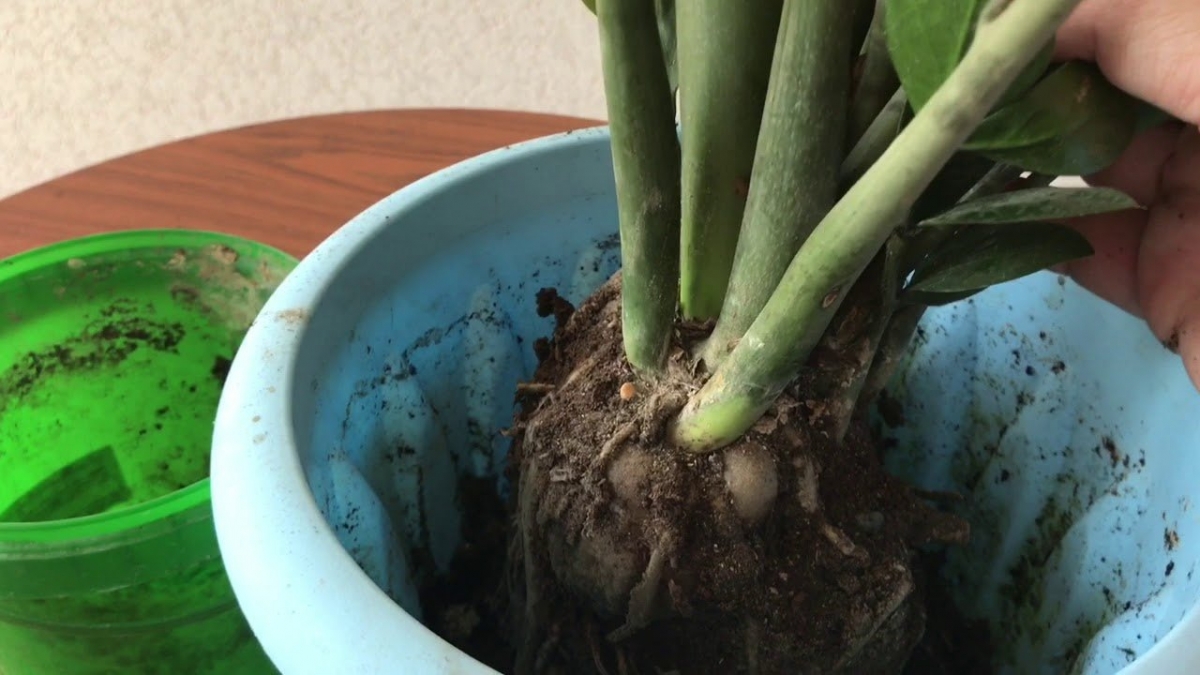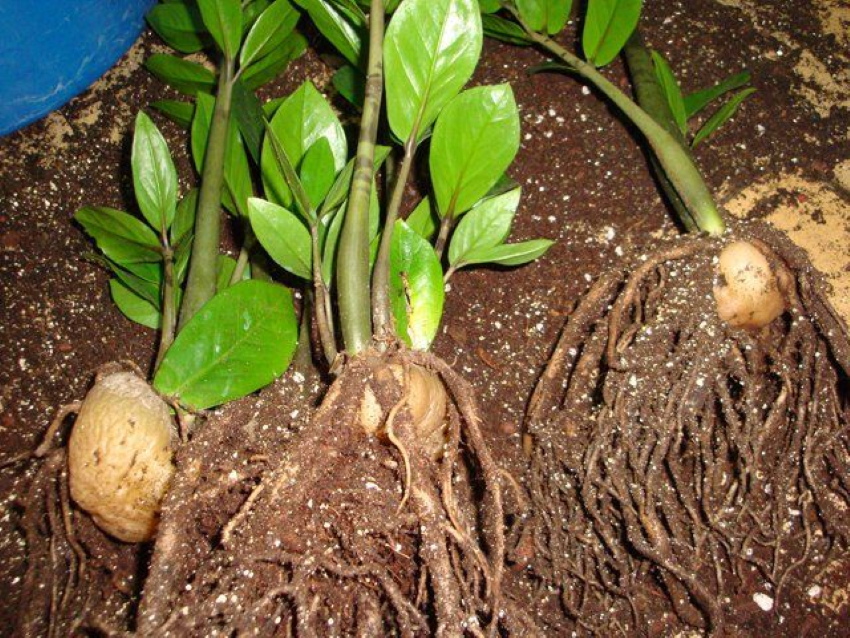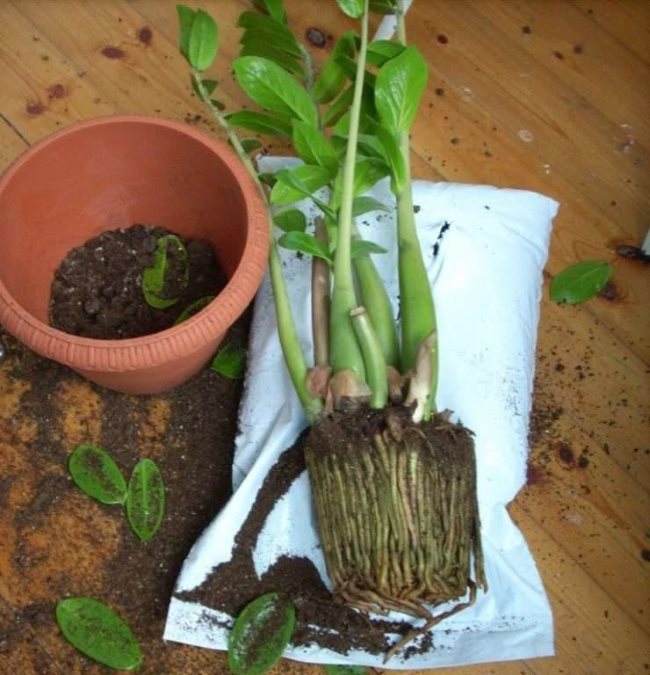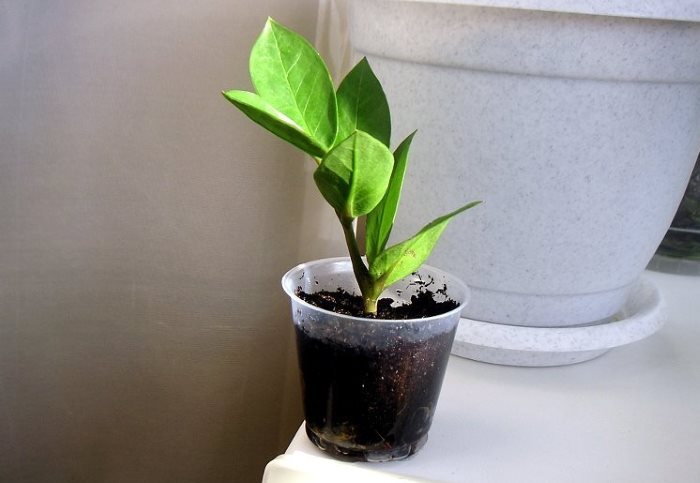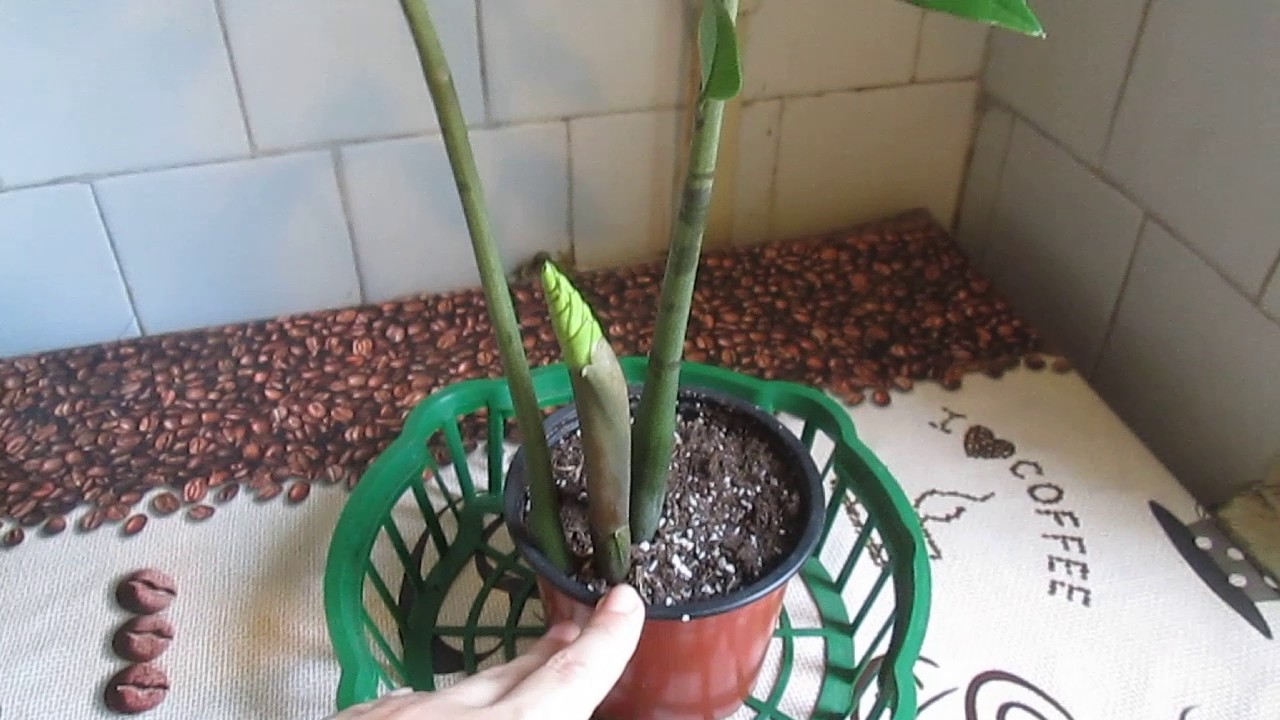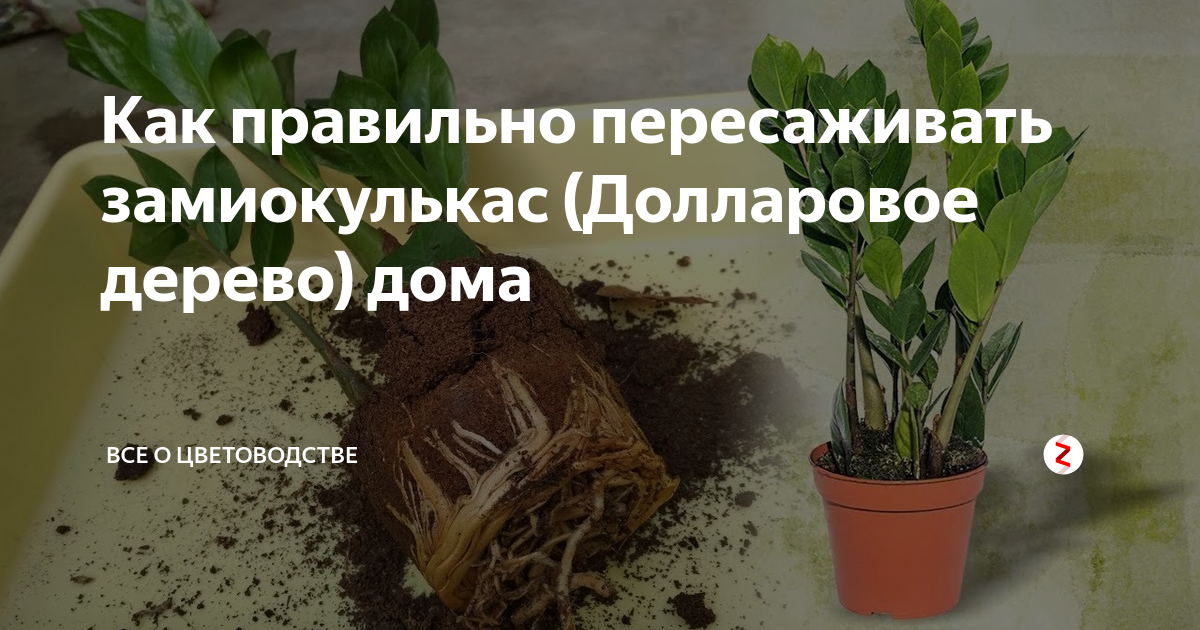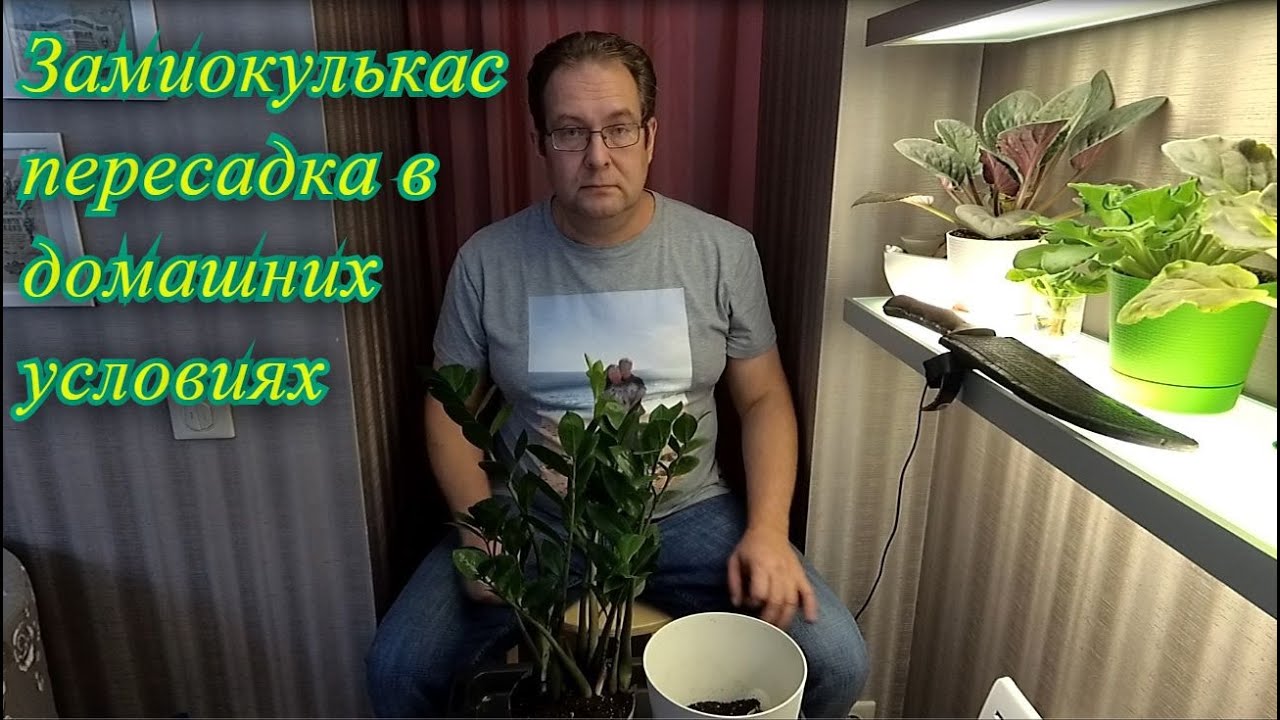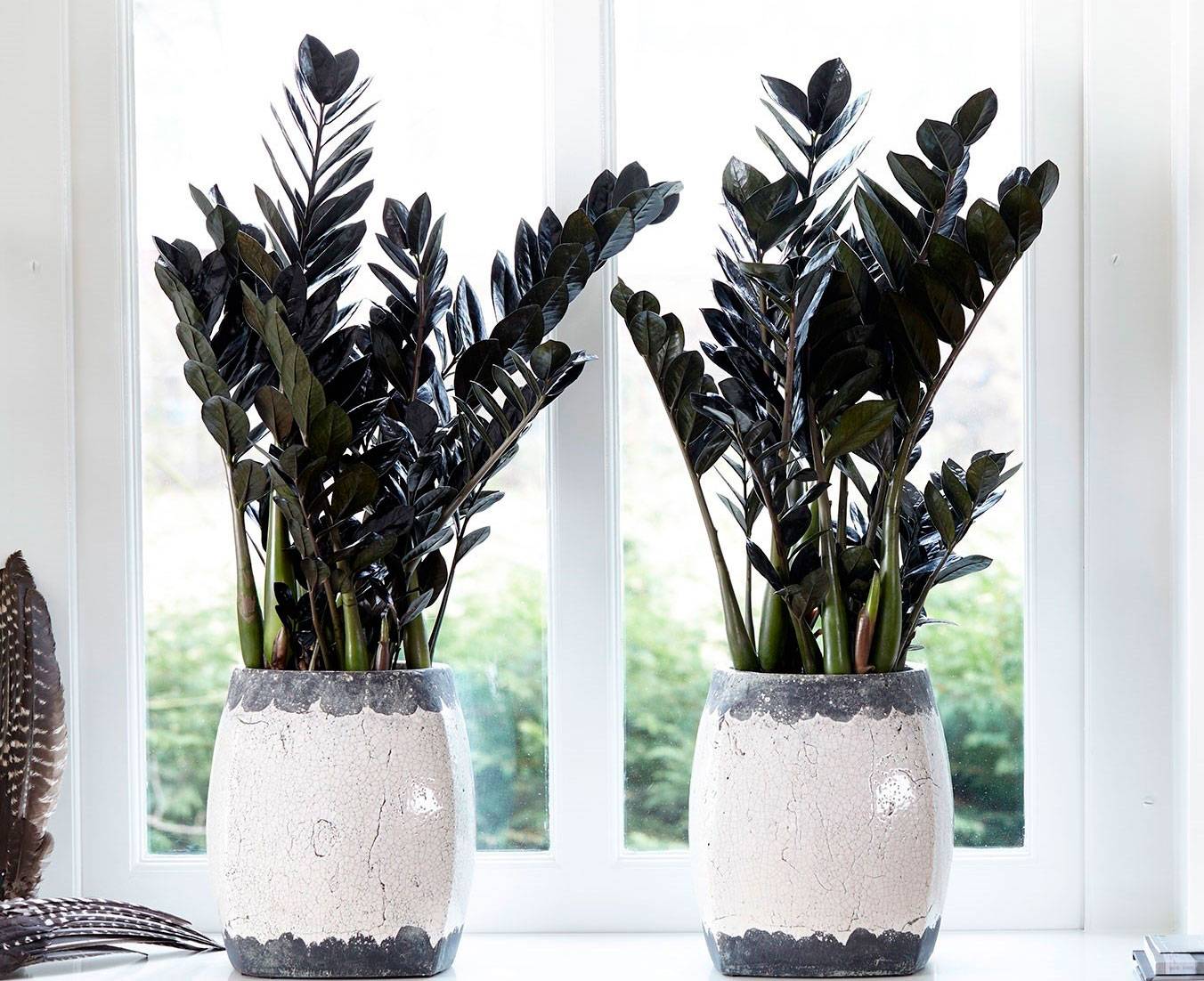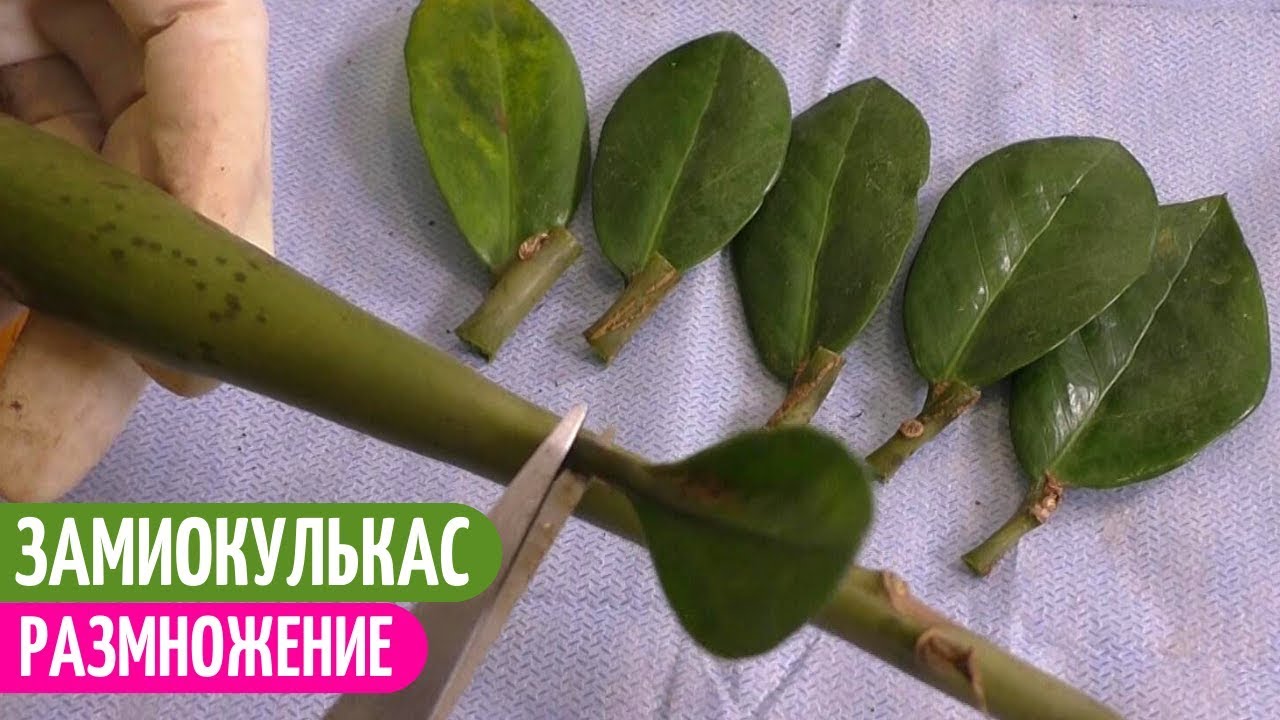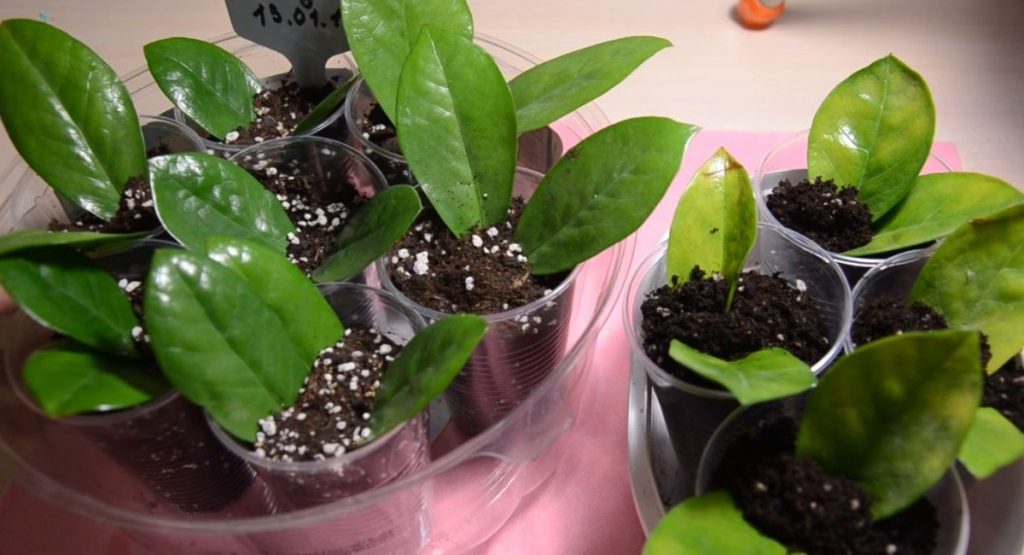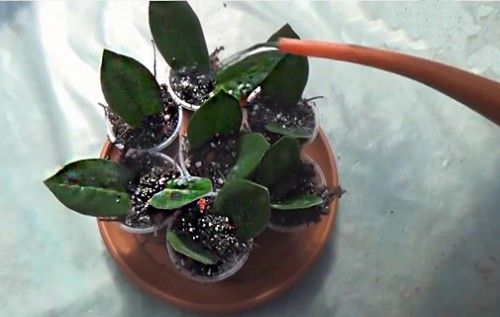Growing conditions
Pot
For seedlings, a small pot is needed, because the plant first and foremost fills the entire space of the pot with roots and only then begins to build up the green mass. For this reason, at the stage of active root growth, yellowing of the mother leaf blade or cutting is observed, followed by wilting, because the nutrients from them are used for the development of a new shoot.
When a rosette of 2-3 leaves is formed, it is transplanted into a pot with a diameter of 2-3 cm larger than the root system. Further care is provided as for an adult plant.
Microclimate
For a succulent, diffused light is suitable. Accommodation is possible on the south side of the premises, including under direct sunlight in the morning and evening hours. In the daytime, during the hot period, the succulent needs shading.
The optimal daylight hours are 10 or more hours. Lack of lighting leads to stretching of the stems and loss of color saturation. Compensate for the lack of light by using artificial sources - fluorescent lamps.
The optimum temperature is 18-25 ° C in summer and not lower than 15 ° C in winter with a humidity of 30-60%.
How to properly care for the money tree at home
Popularly, this flower is known as the money or dollar tree. It is believed that it helps to earn exactly foreign currency. The zamioculcas plant belongs to the Aroid family. The homeland of Zamiokulkas is tropical Africa. Moreover, it grows in a desert area: leaves and roots are able to store moisture, which they use during a drought. Quite large leaves of zamiokulkas are located straight on the stem. The petioles are fleshy and thick.
At home, the plant blooms very rarely. Its flowers are cobs, in which small light-colored inflorescences are collected. The cobs appear at the bottom of the flower and are therefore not always visible. An adult plant can reach one meter in length, although the zamioculcas grows extremely slowly. Such a flower can be a decoration not only for an apartment, but also for a large office space. Perhaps, in a spacious interior, it will look more harmonious.
Watering mode: winter - summer
Watering should be moderate in summer and spring. If the plant grows in a pot with a tray, then water should not stagnate on it. Zamioculcas can tolerate drought, but not stagnant water in the soil. From this, root diseases and rot begin. In winter, watering should be sparse.
The soil should dry out well in the pot before the plant gets a dose of moisture again.
Illumination requirements
Zamioculcas needs placement in a bright place. However, the light must be diffused. The ideal place in the summer - in the garden or on the balcony, anywhere in the open air. In winter, the zamioculcas should be placed closer to the window so that there is more light.
Temperature regime
The temperature regime in winter should be above +12 C. Too low temperature will lead to inhibition of plant development. And at the same time, the advantage of the zamioculcas plant is that it can tolerate a wide range of temperatures: in summer in thirty-degree heat, and in winter at temperatures from +12 C, the plant feels great.
Air humidity
For zamioculcas, spraying the leaves is not essential. But still, the plant is often covered with dust, especially in the summer. Therefore, you need to arrange a shower or wash to keep the flower attractive. If in the summer zamioculcas is located in the open air, then swimming in the rain is enough for him.
Fertilizer, top dressing
Fertilizers are applied during the growing season of the plant.You can alternate organic with mineral. Frequent feeding is not necessary, once every two weeks will be enough. For zamioculcas, it is also customary to use cactus-succulent fertilizers. They help to accelerate the growth of the flower. Once a month, the leaves of the plant should be sprayed with a urea solution. This will also be a top dressing, only foliar. It is recommended to apply fertilizers in summer, since in winter the plant most often has a dormant period. The application of liquid fertilizers and watering should be alternated so that the roots do not rot.
Diseases of the money tree
This pest migrates to zamioculcas from other plants. The insect has a waxy carapace, from which the name "scabbard" comes from. When the insect is still very young, it is very difficult to notice it. Actively multiplying, the scale insect appears in the form of dark spots on the leaves and stems. Adult scale insects sit on the plant without moving. Therefore, you need to inspect the plant, and in time to remove the shield with a wet rag, and it should be destroyed with a solution of the drug Aktara.
Also, the larvae are destroyed by making a solution of soap and tobacco with the addition of a small amount of kerosene or denatured alcohol. After the destruction of pests, zamioculcas should be additionally treated with soapy water or insecticides.
Spider mite
This pest looks like a very small red spider. With its cobwebs, it envelops the lower part of the leaves. It can be washed off the plant with plain water, tobacco infusion, insecticides. Pollination of the plant is recommended to be carried out outdoors.
Aphid
Aphids infest zamioculcas not often. This pest is black, gray or green in color. Aphids can be found, as a rule, on the bottom of the leaf and on the tops of the shoots. The insect reproduces quickly and sucks out the sap of the plant, as a result, the leaves shrink, dry out, and the plant is on the verge of death. Special formulations help from aphids, as well as such a solution: 1 gram of sulfate, 1 gram of nicotine per liter of water with soap. The soapy water can be mixed with wood ash.
Root rot
This is one of the most undesirable diseases, as it can completely destroy the plant. Rot occurs from over-watering: bacteria are the causative agent of the disease. Symptoms are as follows: the plant turns yellow, sticks, and subsequently is easily pulled out of the ground. At first, the disease manifests itself in the root growth zone, and then falls below and destroys the entire root.
When diagnosing root rot, you must immediately stop watering the plant. Then free the zamioculcas from the ground, remove the rotten roots and replace the soil in the pot with dry soil. And if necessary, you need to use a foundation or oxyhom.
Zamiokulkas transplant

The best time for a transplant is April. It is not necessary to repot the plant too often: it is enough to do it once every three to four years. If you are thinking of changing the pot, then do not rush to choose a size twice the previous one, because zamiokulkas grows so slowly that its increase is unlikely to be more than 10-15%. If the plant does not grow for the first time after transplanting, this is normal: the root system is exploring new soil.
The plant requires a humus substrate. A mixture of garden, garden and forest land will do, you can add a little sand. Sometimes even charcoal is added, but it dries out the roots. A quarter of the pot should be covered with high-quality drainage. The transplanting process is as follows: the plant is carefully removed from the pot, the earth is removed from the roots. This is done in order to cut off roots that have a bad smell. If the roots are soft, then they also need to be removed. Planting depth is the same as in the old pot. After transplanting, you need to move the plant to partial shade and leave it alone.
It is better not to transplant the old plant, otherwise it may die.
How to care for a dollar tree
If a dollar tree has got into your house, you should take care that its green "money" does not lose its power and really give you wealth. What does the plant like and how to care for Zamiokulkas correctly?
Where to put
The flower will not mind if you place it where there is a lot of light, but make sure that direct sunlight does not fall on the leaves. Great if your windows face south. On the north window, the leaves of the plant may decrease in size, but it will need to be watered less often. In the summer, it is worth taking the flower to the balcony or terrace.
The soil
In nature, a tropical succulent plant grows on rocky soils; at home, a store-bought cactus mixture is suitable. You can prepare the soil yourself. Take one piece of leafy and sod land, add peat and sand, and you will have an excellent composition for the roots of zamiokulkas.
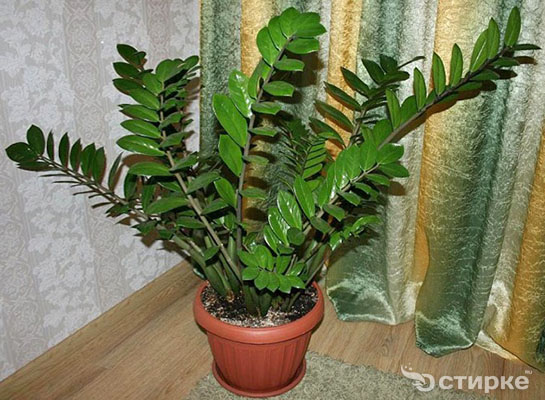
Temperature
The plant treats the temperature calmly and does not show any special wishes. It develops well both at +20 and +25 degrees. In winter it retires, and in spring the active phase of growth begins, but the flower grows very slowly.
Watering
If you look at the photo of a zamiokulkas flower, it is easy to determine that, like most succulents, it is drought-resistant. Evidence of this is its fleshy leaves and thick branches. Easily tolerating the lack of moisture in the soil, the plant loves spraying. On winter days, spraying and watering should be reduced to a minimum, almost stopping them.
Tip: often wipe the flower leaves with a damp sponge, and it will answer you with strong and strong shoots.
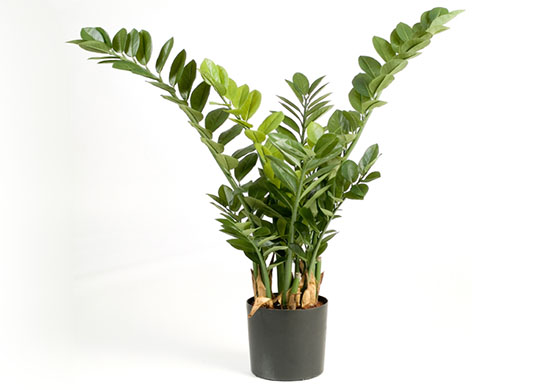
Top dressing
Tropical exotic survives well in poor soils, so it should be fed only in spring, during the growing season. For feeding, take regular store-bought succulent fertilizers and apply them once every two weeks.
Transfer
Let's find out how to transplant zamioculcas into another pot after purchase. First of all, it is necessary to give the plant time to adapt and not to transplant it from a store container to a home container on the day of purchase. Keep the flower for 2-3 weeks in a purchased container, and during this time prepare a short and not narrow pot. The root system of the plant is large and voluminous. Prepare a container with a wide neck and a height of about 10-15 cm.
Lay a two-centimeter layer of expanded clay at the bottom of the pot, then add sand at the rate of 1/4 of the total volume of the pot. Transfer the plant along with the earthen clod to the prepared container and sprinkle with turf soil.
Important: transplanting zamiokulkas at home is carried out as needed, only when you are sure that the roots have become cramped in the old pot
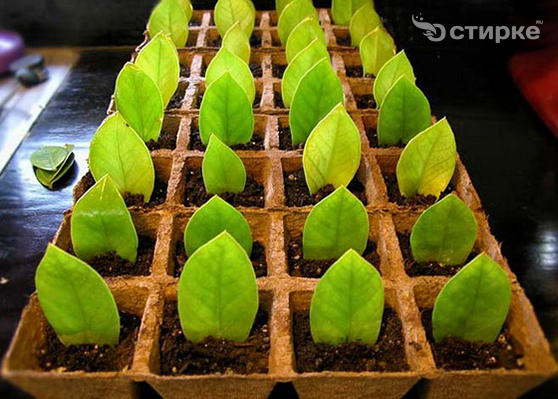
Varieties of zamiokulkas
When describing home care and transplanting a zamioculcas flower, it is important to consider the variety, because some varieties require slightly different keeping conditions. There are the following types of dollar tree:
There are the following types of dollar tree:
- Zamioculcas Zamifolia is the main species that is most often found in domestic stores. The flower received this name for its similarity with the plant of the Sagovnikov family - zamia.
- Zamioculcas Zamielistny grows in the mountains of East and Southeast Africa. The lanceolate variety of this variety has elongated leaf plates of a special shape.
- The variegated species was brought from Madagascar. At home, this large plant grows up to 1.5 m in height. Its main difference is in the color of the leaf plates - there are white stripes on the green background of the leaf.
- Zamioculcas Motley has an unusual color and configuration of plates. Elongated thin leaves are covered with specks of lemon shade.
- The dark purple dollar tree variety comes from Korea. This species is compact in size.Young shoots of a light greenish color darken so much as they mature that they become almost black.
- The view of Boivin is also popularly called “the pearl of Zanzibar”. A large tuber of a flower accumulates a lot of moisture, so the bush easily tolerates drought. But for abundant growth, systematic watering and spraying is important. Dense sheet plates with an even edge have an emerald hue. The Boivin variety is suitable for novice flower growers.
All growers who do not yet have zamiokulkas in their collection are advised to purchase it. The bush will not cause much trouble. The pot is allowed to be placed on a window with any orientation. In addition to aesthetic pleasure from an attractive appearance, an additional plus is that the plant will attract well-being and prosperity to the house.
Reproduction

Reproduction at home occurs quite easily in a vegetative way. Remember, the plant is poisonous! Here are some ways:
- Tuber division. Divide the rhizome into several parts and plant each of them in separate pots, the size of which should be proportional to the rhizome. A drainage base is placed in a shallow container, and on top of it is soil suitable for an adult zamiokulkas. After this procedure, care is carried out as for a perennial plant.
- Stem cuttings. The stem is cut slightly above the soil and cut into pieces between the leaves. A leaf with a bud is suitable for a separate planting. The slices are dried for one hour, after which the stem cutting is pressed a little into the vermiculite and watered abundantly. Rooting will take place after 1-4 weeks.
Please note that for fruitful rooting, a temperature of at least +25 degrees is needed. The illumination should be sufficient
Eliminate the drying out of the soil, remembering to water the seedling in time. Over-watering is just as harmful as under-watering. Leaves may appear after six months.
Requirements for the growth of zamioculcas at home
Having placed a flower zamioculcas (dollar tree) at home, you should provide it with proper care. After buying a flower, he needs to provide a two-week quarantine regime.
During this period of time, the plant will have time to adapt to the climate. After this time, if the flower is healthy, it can be transplanted. Caring for zamiokulkas at home, involves the implementation of such activities as:
- selection of soil;
- provision of illumination;
- irrigation and spraying the flower with water;
- creating the desired temperature;
- feeding during growth;
- fight against harmful insects and diseases.
Below we will consider in detail all the factors affecting the development of the zamioculcas flower at home.
In general, home care for a zamiokulkas flower is not a laborious process, however, it should be borne in mind that it is poisonous, it must be placed away from children and animals.

Lighting for Zamioculcas flower
It shows indifference to the intensity of illumination of the dollar tree. It can be placed in the back of the room, as well as on the windowsill of the north or south window. In the first two versions, the flower will not die, but its leaves will lose their brightness, stretch out in search of light and will necessarily weaken.
Excess sunlight at home for the plant is not a hindrance. If the plant is installed on the south window, it is necessary to spray it with water from a spray bottle several times a day, creating optimal air humidity. Light is especially important for the dollar tree in winter.
At this time, it must be moved closer to the window, otherwise, due to the lack of light, its decorative effect will suffer. You can place a zamioculcas flower anywhere in the apartment, but preference should be given to the sunny side. However, exposure to direct sunlight can negatively affect young, fresh greenery.
Dry air
Dry air negatively affects the dollar tree, especially in winter from central heating batteries. Therefore, it is recommended to put the Zamioculcas flower away from heating. Zamioculcas flower does not require spraying to moisturize foliage and ambient air. Zamioculcas will calmly transfer the usual room environment.
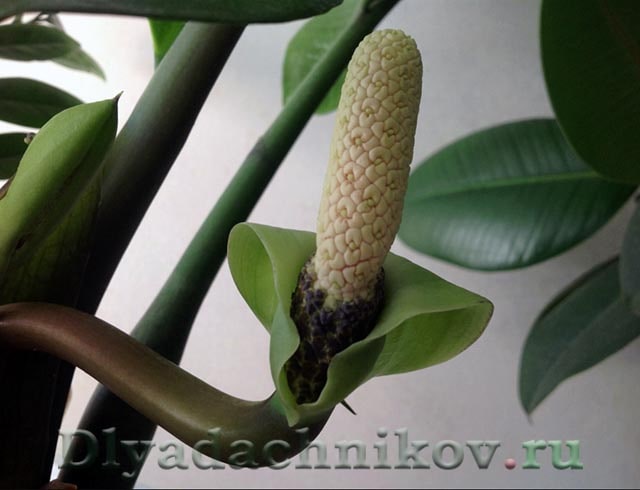 In the photo, the flower of Zamioculcas
In the photo, the flower of Zamioculcas
Temperature requirement
In the environment for growing a zamioculcas flower at home, you need to create a certain thermal regime. In different periods of the year, the plant is not the same. Therefore, it is created:
- in the warm summer season from +21 to +29 degrees;
- in the cold season of the year, the temperature range should be from +15 to + 18 degrees.
Without negative consequences, a dollar tree can withstand some temperature fluctuations, but the temperature should not drop below +12 degrees.
Unlike other plants, the dollar tree flower feels great if the temperature rises to thirty degrees Celsius. This must be taken into account in the growing process, since an unfavorable environment can lead to its death.
In summer, zamiokulkas can be placed on the balcony, where the temperature ranges from twenty-two to twenty-eight degrees. In winter, zamioculcas feels good if the temperature does not exceed eighteen degrees Celsius. Zamioculcas flower responds well to spraying it with water.
Requirements for the soil composition of the flower
For zamioculcas, a loose soil composition is excellent, which is well permeable to water and oxygen. It is easy to buy a ready-to-use substrate in stores, for example, one that is designed for cacti.
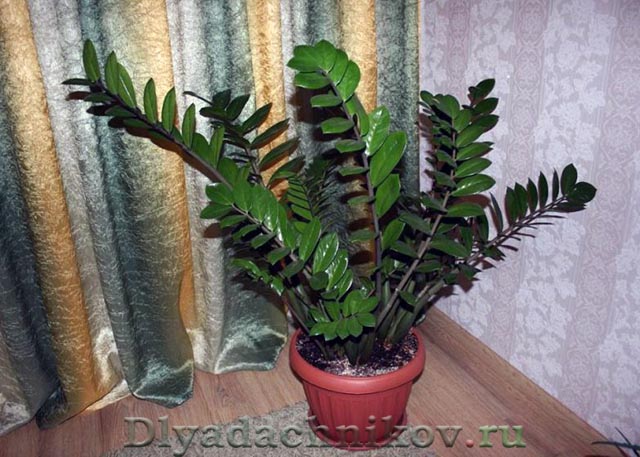
Many flower growers prepare soil mixture for the Zamioculcas flower with their own hands. To do this, prepare a mixture of the following components, taken in equal volumes:
- sod soil;
- field soil;
- sand;
- peat.
Plant care after transplant
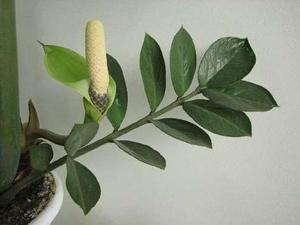 After carrying out such a procedure, the zamioculcas must be left alone for a while so that it takes root in the new soil and adapts to it. After that, he is taken care of, which is as follows:
After carrying out such a procedure, the zamioculcas must be left alone for a while so that it takes root in the new soil and adapts to it. After that, he is taken care of, which is as follows:
- regular watering;
- comfortable temperature;
- feeding.
Zamioculcas refers to a type of plant that does not like excessive moisture. It should be watered in spring and summer in moderation, and in winter this process is minimized.
It is important to ensure that the earth clod completely dries out between waterings. Since at home moisture evaporates rather slowly, excess water begins to stagnate in the pot, causing the appearance of various diseases
This exotic plant feels comfortable at temperatures from +15 to +24 degrees. The main thing is to avoid sudden temperature changes.
The soil must be enriched with fertilizers. They should be introduced from spring to autumn, that is, during the growing season. In winter, the flower rests, so no feeding is required.
Thus, we have sorted out when and under what conditions such an exotic plant as zamiokulkas should be transplanted. This is necessary for its normal growth and development. It does not require any special care, it grows well at room temperature, delighting the owner with its beautiful appearance.
Timing and optimal conditions for the reproduction of zamiokulkas
To propagate a plant requires patience. Young seedlings grow very slowly. First, the base of the future flower is formed - a tuber. The process takes about 2-3 months. The first young leaves will appear on the new zamioculcas only after 5–7 months.
The plant is not demanding to care for, but certain conditions will be needed for its successful reproduction:
- it is better to choose the spring period for the beginning of breeding (as well as the time of transplantation), when all plants start to grow actively. Some experts advise starting the process on the waxing moon;
- for breeding, central heating will not be a hindrance. The plant is drought-resistant, so the air humidity, which fluctuates between 30-60%, will be optimal;
- Zamiokulkas is thermophilic. To grow it, you should create a temperature of +18 ° C ... + 26 ° C, and +16 ° C is the limit, and if it is lower, the plant may die;
- the soil is selected loose, with a drainage device in a ¼ pot (suitable for purchased cacti or succulents; you can mix soil, peat and sifted sand yourself in equal proportions);
- the pot should be chosen plastic or ceramic with a mandatory hole for the drain of excess water; the container should not be too deep and wide.

Causes of the disease and death of zamiokulkas
Pests do not favor zamioculcas, although they rarely attack it due to its toxicity, but improper care can cause significant harm to the plant.
- The plant pulls out the stems - increase the illumination of the flower.
- Zamioculcas has weakened and perishes - this is a consequence of excessive watering. The plant cannot be saved, try to take still healthy leaves and propagate the flower.
- If the leaves of zamiokulkas turn yellow, what should I do? Check the root system. Remove the plant from the pot, inspect the roots, remove any rotten ones, treat the cuts with charcoal and transplant into new soil. Moderate watering.
- Dark spots on the leaves mean that the plant is in a draft or the temperature has dropped to a critical level.
Obviously, all the troubles of a plant are associated with poor care for it. Carefully study the needs of your flower and scrupulously observe them so that it always delights you with its appearance.

In conclusion, I would like to say about one more feature of the plant. The fact that zamioculcas is a flower of celibacy is indicated by the reviews of unmarried girls who decided to have a flower at home. They all complain that the plant has discouraged all suitors from them. Well, if you are sure of this, just take the flower out of the house and the problem is solved. The duality of meanings given to a tropical handsome man is so mysterious that one can get confused. I would like to have money in the house, and family happiness is not spared. However, it is up to you to decide whether to have zamiokulkas in your home.
Signs associated with zamiokulkas
It is believed that the plant has a powerful energy that attracts prosperity and wealth to the house. Even in the canons of Feng Shui there is such information. The pot is placed in the "wealth zone", that is, in the southeastern part of the apartment. To activate the energy, a few coins are added to the ground.
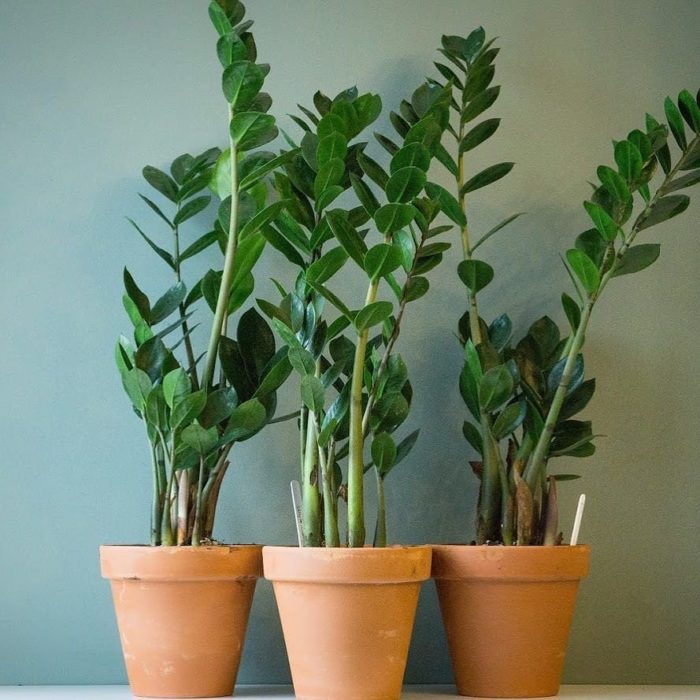
Some growers are convinced that when a new leaf appears on a bush, another portion of money comes to the house. It is customary to give a dollar tree for a wedding, birthday or housewarming. The yellowed leaves of the plant warn the owner about the deterioration of the financial situation.
Blooming zamioculcas prophesies a quick marriage to its mistress. However, since flowers appear very rarely at home, it is also called the "flower of celibacy". Therefore, young girls are not advised to start a plant.
The varieties of the "flower of celibacy"
Breeders are working on breeding new varieties of the plant, and therefore it is very difficult to name the exact number of species. The most famous are three types: zamielistny, zamifolia and variegated.
Zamielistny. The species got its name because of the great similarity with the zamia. The plant is attractive in that the trunk is hidden in the ground, and the root system is completely absent in the first week of life. The flower accumulates moisture in the tuber, and the dark olive leaves peek out from the pot, giving the impression that they are emerging directly from the ground.
At the leaf blade, the petiole is formed in such a way that it is often confused with the trunk. The flower grows up to 1 m in height, the leaves fit tightly to each other, resembling a rosette.This variety is well suited for home decoration and growing in offices, hospitals and schools, as it fills the room with positive energy.

Variegated. This type is very popular with flower growers. After purchase, the flower is transplanted into a nutritious soil with the addition of perlite in a 1: 2 ratio. The variegated species does not like highly waterlogged soil, so it needs to be watered with a drip method or with a spray bottle. For good growth, the flower is exhibited on the south side. After 7 days, the first roots appear in the young plant.

The variety prefers a sunny, bright place.
Zamifolia. This variety is unpretentious to care for and undemanding to lighting. It can grow both on the sunny side and in the shade. This plant is believed to be the most successful in making money. But if the tree does not bring financial well-being to the family, because of its decorative appearance it will adorn any interior.
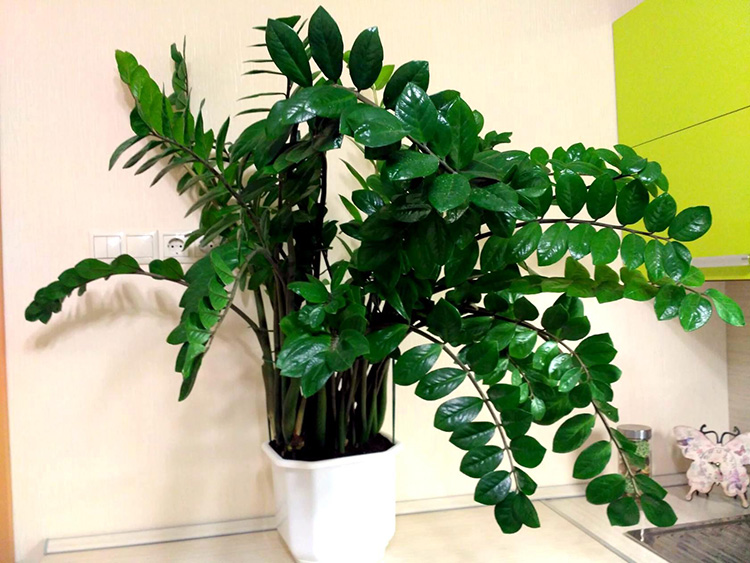
The plant grows well even under artificial light
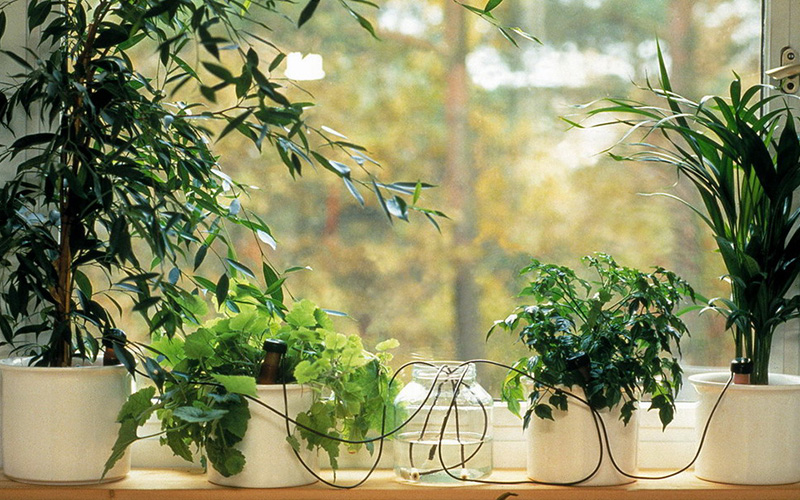
Catalog of indoor flowers with photos and their names. In a special publication of our portal, we will tell you in detail about indoor flowers. You will learn about the types of indoor flowers, fruit indoor flowers and see the photo gallery.
How Zamioculcas blooms (photo)
Novice gardeners are often interested in the question: will the zamioculcas bloom at home, what to do to provide care to allow the plant to start blooming. A succulent plant normally blooms in maturity when its shoots begin to grow.
But many eyewitnesses who have dealt with this wonderful plant insist that young plants also achieve successful flowering, if only a stable water, temperature and light balance is followed. Although zamioculcas can stay out of the sun for a long time, grow closer to the north, still insufficient lighting will not allow the flower to bloom.
If you want to see zamiokulkas bloom, position it closer to the south or east to avoid a drop in temperature. During flowering, a lot of energy is spent for pollination, creating seeds, it is necessary to take care of the plant at this time.
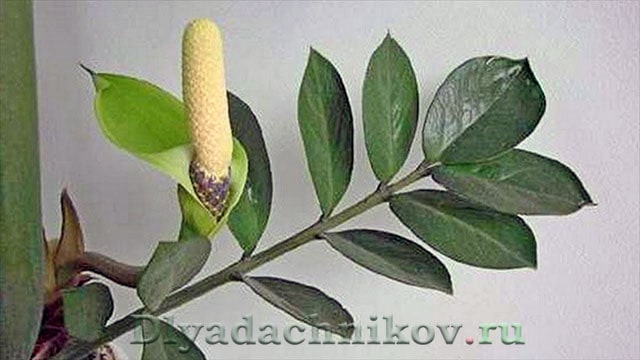 Photo of a flower Zamioculcas
Photo of a flower Zamioculcas
Temperature mode is also necessary. The plant will not survive below ten degrees Celsius. Therefore, the humidity in the room should also not be high. Like all succulents, it does not tolerate too much moisture, so you need to water it sparingly.
Leaves sometimes need to be wiped with a damp cloth to remove dust. It is also a succulent and sometimes needs to be fed with fertilizers. Cactus fertilizer, which is buried under the soil and sprayed on the plant, is suitable.
Why zamioculcas does not bloom
Plant age is the main, but not the main indicator. Uncreated normal flowering conditions will not allow you to see the beauty of the flower. Viruses can stop flowering, but the plant has good immunity.
How zamioculcas blooms at home
The flowering of zamiokulkas is an unusual phenomenon at home. First, the peduncle will begin to form - the stem of the plant grows straight, but over time it tends to the floor, the leaves wrapping the peduncle change their shade, becomes bright green, the process occurs together with the peduncle.
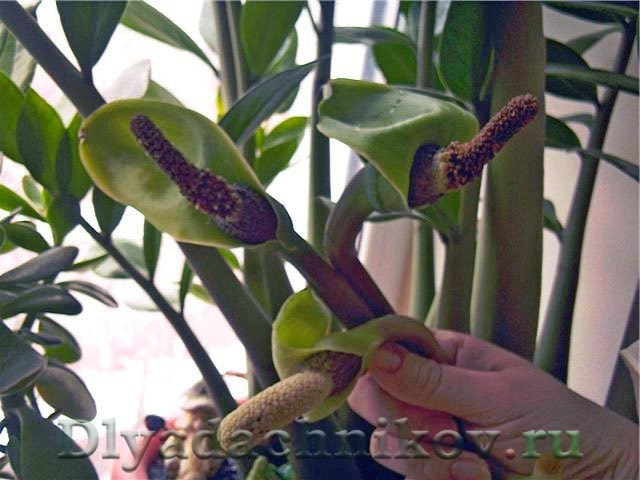
conclusions
Ignoring the fact that zamiokulkas does not have such a beautiful flowering, which is rarely observed, it still remains a beautiful and unpretentious plant. The specialty is the wax that appears after flowering, which makes it popular with gardeners. The dollar tree will bloom for a long time, multiply too. Therefore, you need to take care of the zamiokulkas flower correctly at home.
How and when Zamioculcas blooms
Previous
Indoor flowers
Next
Indoor flowers The most important information about indoor abutilon - types of reproduction and care

